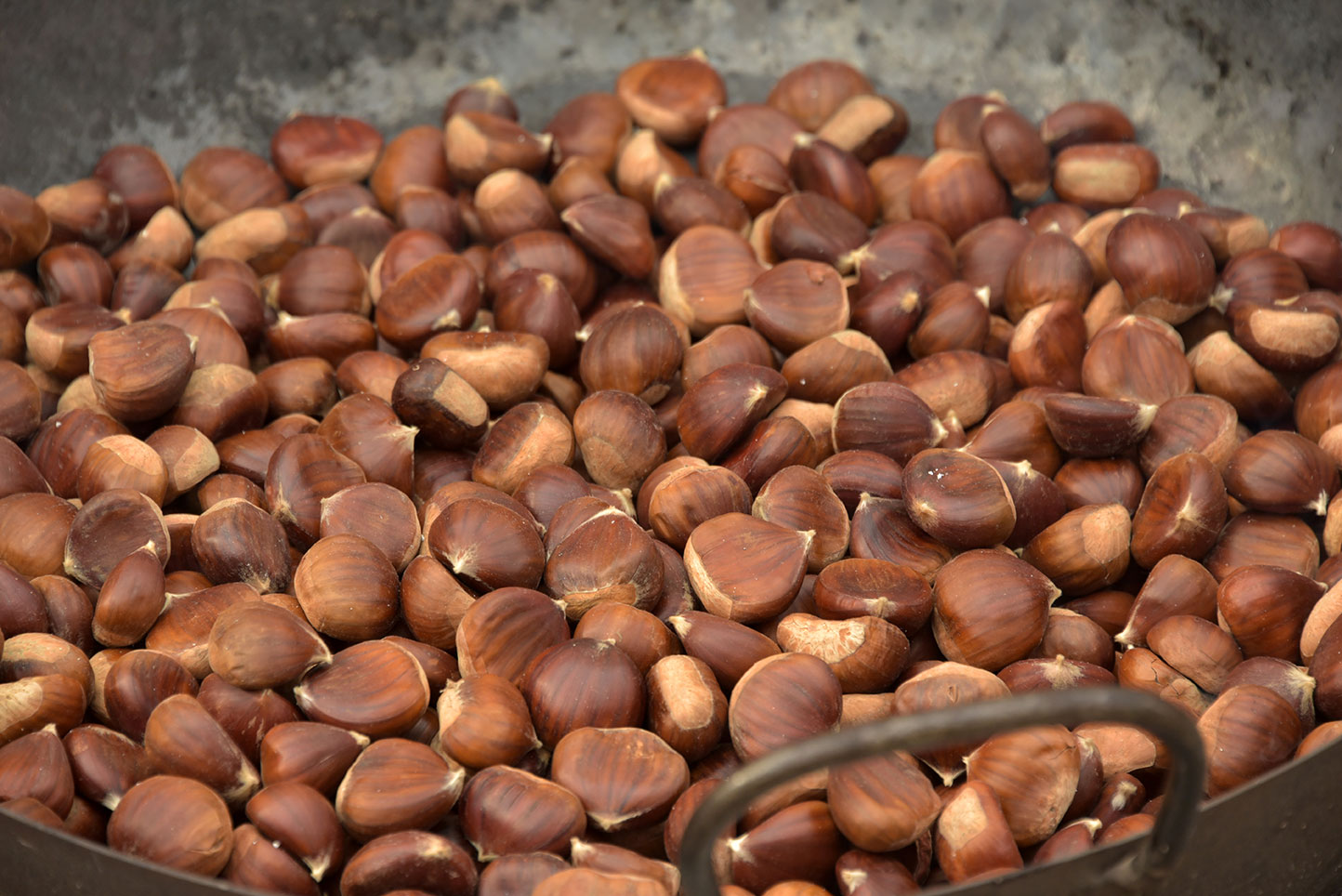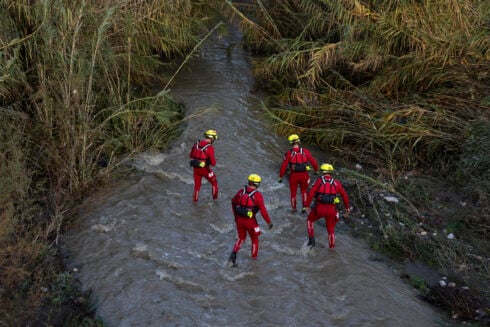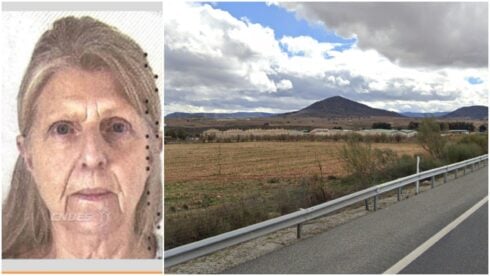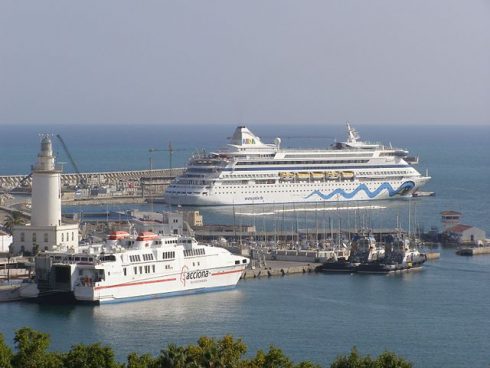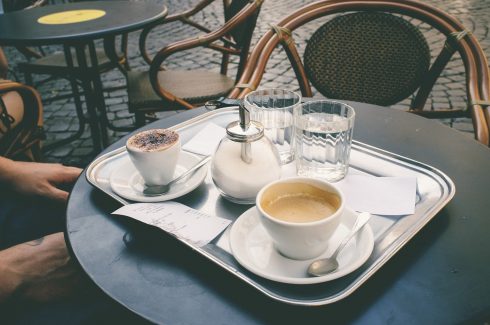WITH the clocks turned back and the nights drawing in, La Alpujarra has its own autumn traditions. From roasting chestnuts to picking fennel and cutting fresh flowers, the Alpujarreños are always quick to enjoy local produce from their fertile land.
This area has just celebrated Halloween, which is usually the time for mountain-dwellers to start lighting their ‘lumbre’ (open fire or woodburning stove) and fetch the warm blankets stashed from last winter, as well as carving out pumpkins, eating ‘castaños’ (chestnuts), and dressing in spooky costumes with faces painted like Frida Kahlo.
This year, however, an unseasonable heatwave had people flocking to the Costa del Sol to sunbathe at the beach, rather than restocking their woodpile. For the fist time in years, the Alpujarreños celebrated the Halloween weekend wearing shorts and vest tops, instead of jackets and jeans.
Castañada celebrations
During November, a familiar sight in La Alpujarra is ‘castaños’ (chestnuts) roasting in a pan. What could be more warming than shiny nuts, grown on local trees, done to perfection, maybe washed down with a shot of ‘anís’, a glass of ‘vino costa’, or a hot chocolate drink? Just watch that you don’t bite into a chestnut that contains a worm!
Kicking off at All-Saints Day (‘Dia de Todos Los Santos’), aka Halloween, the chestnuts appear widely in a festival known as ‘Castañada’ or ‘La Maruca’. With Celtic roots, this has a long history in Spain, hailing from the north of Spain, Catalunya, and the Canary Islands, as well as Portugal.
These days, the ‘Castañada’ refers to hundreds of chestnuts roasted in a huge, flat pan in the village plaza, so that the residents can come together and enjoy the (possibly slightly blackened or underdone) treat en masse. Many towns and villages serve the chestnuts alongside beer, wine, and soft drinks, or barbequed meat. If you’re lucky, there’ll be a free-for-all approach, with unlimited food and beer – although this is less common following the pandemic.
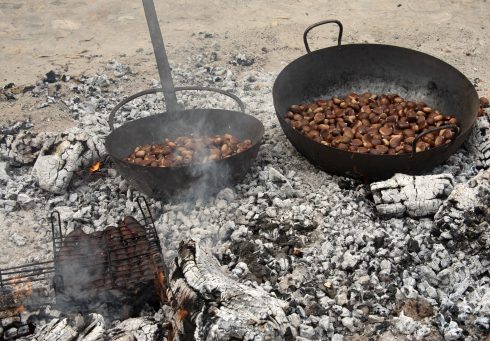
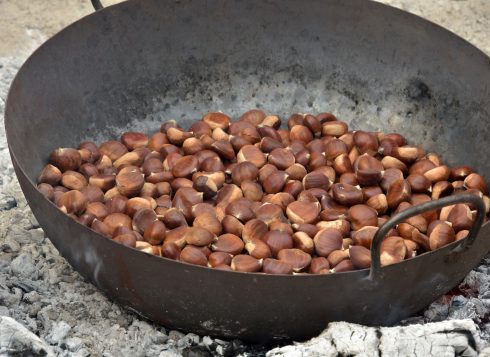
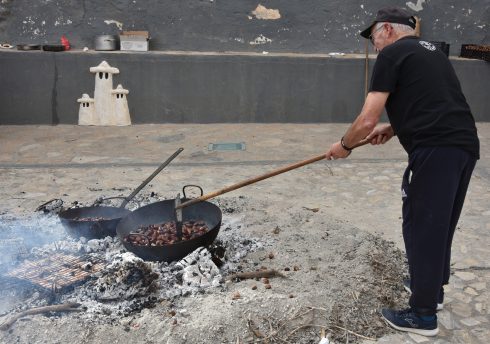
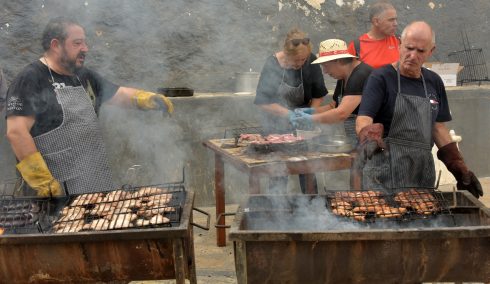
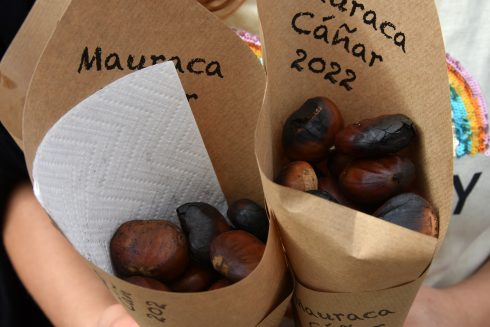
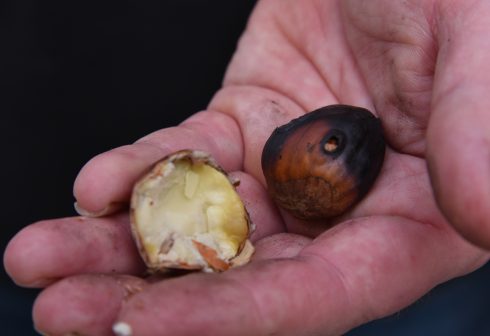
Celebrating the dead
A more modern celebration in Spain than the ‘Castañada’, Halloween hails from the US and is a relatively low-key event in rural Andalucia, largely using natural produce instead of plastic ‘tat’ from the local bazaar.
This year, Halloween fell on Monday 31 October, prompting some towns to start their celebrations on Saturday 29, giving people ample chance to dress up, make merry and respect the dead with special flower arrangements.
October 31 was ‘Dia de las Brujas’ (Day of the Witches), November 1 ‘Dia de Todos Los Santos’ (All Saints’ Day), when families visited the graves of the deceased, and the event ended on November 2 with ‘Dia de los Muertos’ (Day of the Dead), for a rest.
The thriving spa town of Lanjaron hosted a four-day feria, featuring stalls, artisan crafts, a “bake off” contest for adults and children, and live bands. On the night of 31 October, it organised a costume parade through the main streets, a huge ‘Castañada’ event with hundreds of guests, and a DJ in the plaza. “It has been a party all the time here”, said reveller, Michi Kvin.
Other towns were more subdued and ended earlier, such as Orgiva, which had a ghost tunnel and music from various decades in the plaza. Both Busquistar and Soportujar are celebrating on 5 November, to achieve differentiation from other towns.
In the village of Canar, the Olive Press saw a rare site: participants in a trampoline ‘jump’ class dressed as ‘los Muertos’, resplendent with face paint and costumes.
One custom that Spain has never imported is the UK’s Bonfire Night on 5 November – meaning that we Brits don’t have the chance to wave sparklers in front of a burning pyre. With the tendency of many Spanish fiestas to let off noisy bangers 24/7, and the current fire risk, this might be for the best!
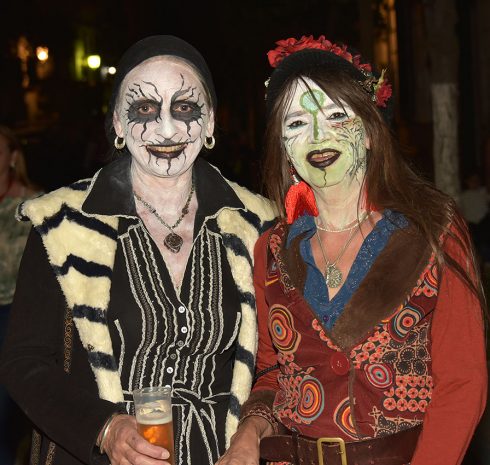
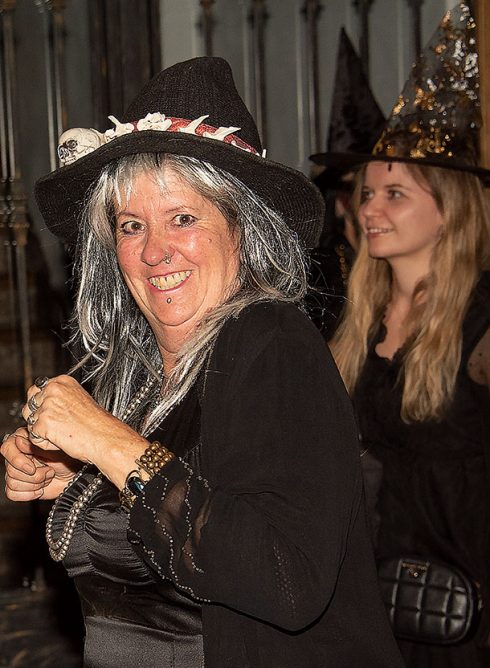
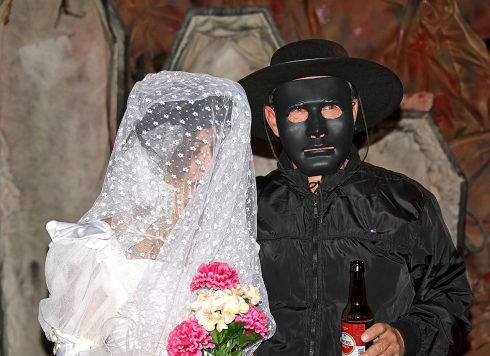

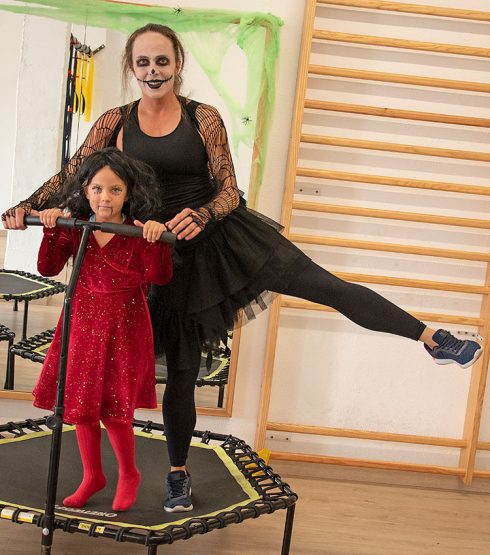
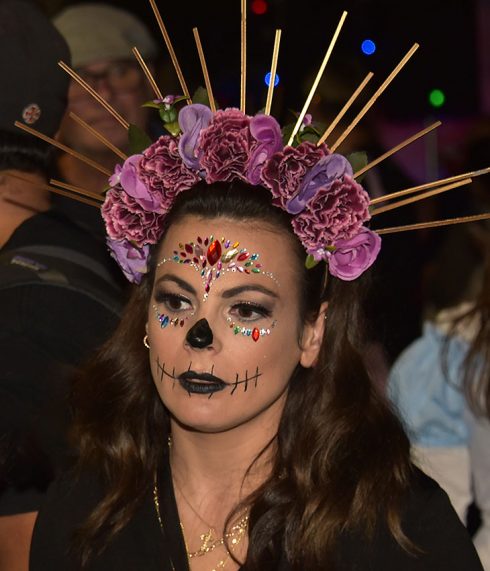
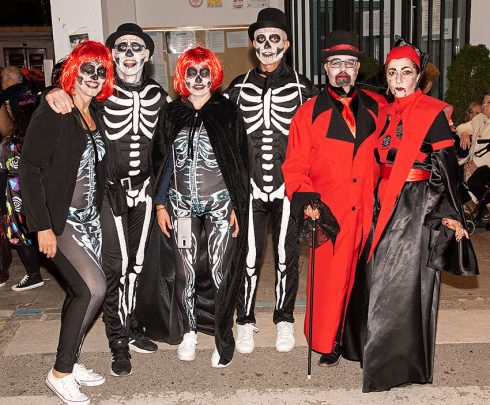
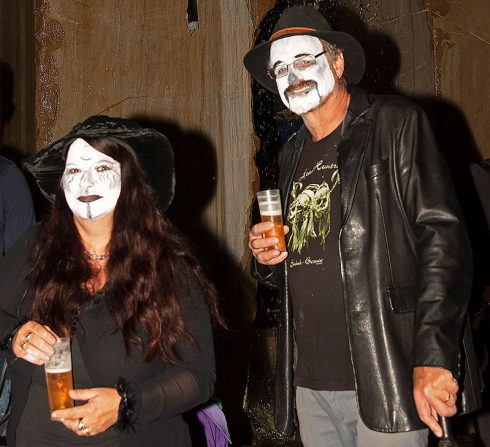
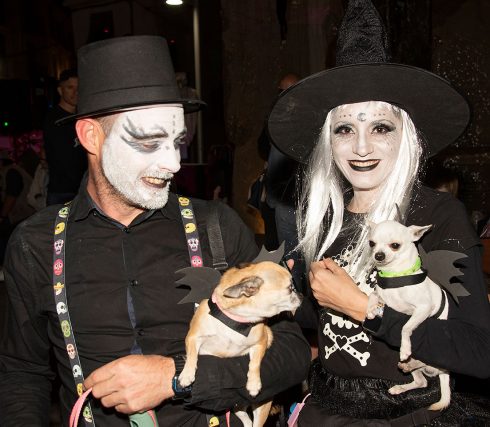
Seasonal food and drink
A popular autumn Alpujarran dish is ‘buñuelos’: these are airy doughnuts, a bit like Yorkshire Puddings. These can be consumed with a cup of hot chocolate, or the cook might squirt chocolate on top.
During autumn, the locally occurring herb, fennel, is ready to pick. This is a key ingredient in a stew called ‘puchero’, where it is combined with garbanzo beans and meat, creating a delicious and warming dish.
Adults might wash down their autumn fayre with the locally-brewed ‘costa vin’ – a wine made from grapes grown on the Alpujarran terraces and, traditionally, trampled by bare-footed ‘campesinos’ (it’s best not to think about that!).
The brave at heart may enjoy a ‘chupito’ (shot) of anis – although consume several at your own peril. Even more dangerous: mix it with brandy to make a lethal drink called ‘sol y sombra’.
READ MORE
Autumn in Spain’s Alpujarra region: hiking, biking, riding and other adventures
Travel in Spain: these are the villages you should visit in La Alpujarra south of Granada
Click here to read more Spain News from The Olive Press.

